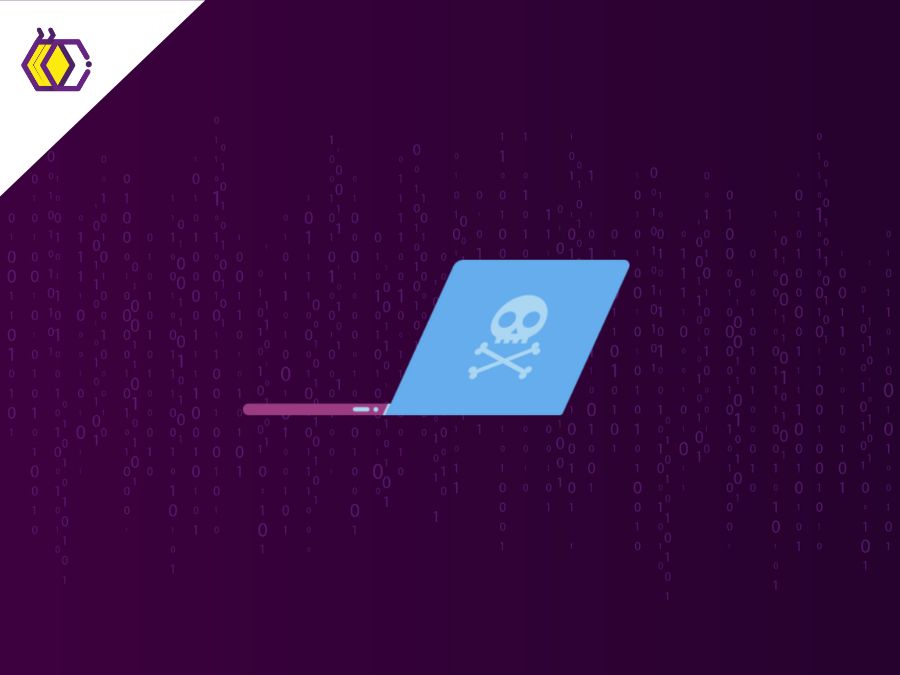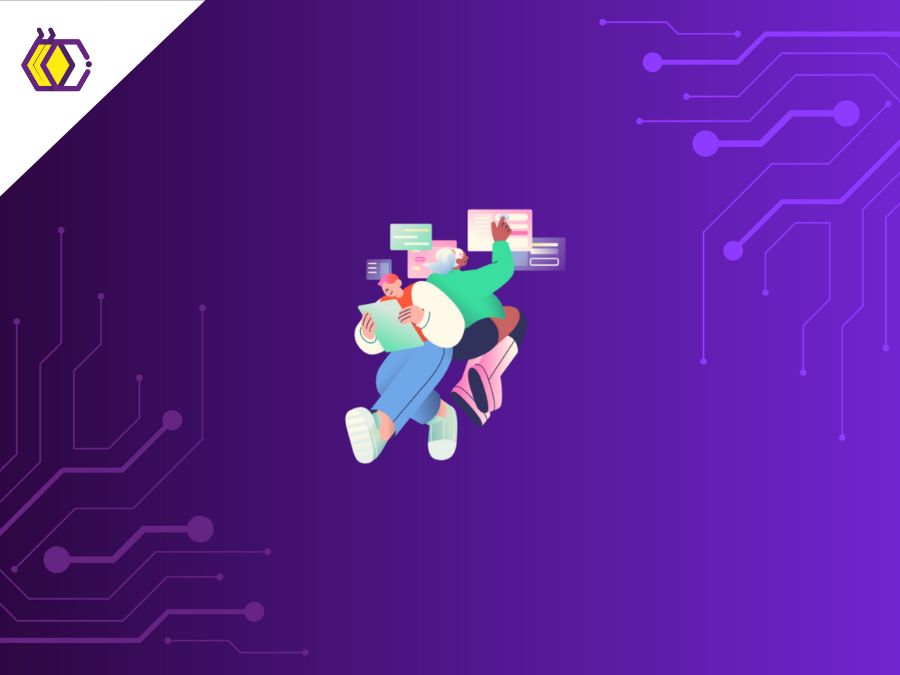
IoT
(18 minutes read) The world of technology is rapidly evolving and one of the newest trends in this field is the Internet of Things (IoT). IoT has become a buzzword in recent years. However, understanding all the most important terms related to this technology can be challenging. That's why, in this article, we'll take you on a journey through the evolution of IoT technology. We'll explore its history, development, and potential applications so you can learn everything there is to know about the Internet of Things. WHAT IS IoT? IoT stands for Internet of Things and refers to the connection between everyday objects to the internet, allowing the exchange of data and information between them. In other words, it is the interconnection of physical devices, such as home appliances, vehicles, sensors, among others, through wireless communication networks and standardized communication protocols, allowing these devices to communicate with each other and with users. IoT makes it possible to collect real-time data from different types of devices, enabling the creation of intelligent and customized solutions for different needs, from patient health monitoring to urban traffic management. In this way, we realize that IoT has the potential to transform the way we live and work, bringing more efficiency, safety, and convenience to our lives. HOW IS THE IoT CHANGING THE WORLD WE LIVE IN? The Internet of Things (IoT) has revolutionized the way we live and work. The term is already considered one of the most pertinent and important today, marking the great technological evolution of recent years. But that is not all. IoT is changing the world we live in in many ways. See some examples below: Energy Efficiency: IoT devices can be used to monitor and control energy consumption in a homes or buildings, enabling energy savings and cost reduction. Industrial automation: IoT is transforming industry, enabling the creation of smart and automated factories that optimize processes and reduce costs. Smart cities: IoT can be used to create smart solutions for traffic management, street lighting, garbage collection, among other urban services. Health: IoT can be used to monitor the health of patients in real time, enabling personalized and more efficient treatment. Transportation: IoT devices can be used to monitor vehicles performance and predict problems before they occur, improving safety and reducing costs. Smart farming: IoT can be used to monitor soil, moisture, and temperature, enabling the creation of smart solutions for planting and harvesting. Smart home: IoT allows the creation of smart homes, with integrated lighting, air conditioning, security, and entertainment systems, providing greater comfort and convenience for users. Overall, the IoT is making it possible to create more efficient, personalized, and intelligent solutions for a variety of needs, bringing benefits to businesses, governments, and individuals. However, it is important that security and privacy issues are considered, to ensure that the IoT is developed sustainably and securely. THE CHALLENGES OF IoT: PRIVACY AND SECURITY IoT brings with it a series of challenges regarding privacy and security, which need to be considered to ensure the sustainable and secure development of this technology. Below, we present some of the main challenges in these two aspects: THE PRIVACY CHALLENGE The Internet of Things presents several challenges regarding user privacy. This is because IoT devices can collect and share a large amount of data about users, often without them knowing or having given consent for the collection of this information. Below are some of the key IoT-related privacy challenges: Excessive data collection: IoT devices can collect a large amount of data from users, often unnecessary for their basic functionality. This data may include information about the user's location, energy usage habits, sleep patterns and physical activity, among others. Excessive data collection can raise privacy concerns, especially when users are unaware of what data is being collected and how it is being used. Personal identification: IoT can allow users to be personally identified through information collected by devices, such as IP addresses, device identification information, location information, among others. This can lead to the disclosure of sensitive personal information such as medical and financial data. Lack of Transparency: Many users are unaware of what data is being collected by IoT devices and how it is being used. Lack of transparency can raise concerns about privacy and misuse of data. Data Misuse: There is a risk that data collected by IoT devices will be misused by third parties, including hackers and companies selling user data. This may include using data for advertising purposes or to track user behavior. To address these challenges, it is necessary for IoT device developers to consider user privacy from device design. This may include the use of privacy technologies such as data encryption, implementation of privacy-by-default practices, and transparency in data collection and use. In addition, users must be aware of IoT-related privacy risks and must be able to control the use of their personal data. Regulation can also be an important tool to ensure that companies that develop IoT devices follow privacy best practices. SAFETY RISKS Without a doubt, one of the biggest concerns surrounding IoT security is the issue of privacy invasion. Many smart devices have access to personal data such as names, addresses and financial information. If hackers gain access to this data, they can use it for malicious activities such as identity theft or financial fraud. Additionally, some devices such as smart cameras and speakers may record audio and video without our knowledge or consent. Another major concern is cyber-attacks on critical infrastructure systems such as power grids, water treatment plants and transportation networks. Hackers who gain control over these systems can cause widespread disruption and chaos in society. FACING THE CHALLENGES The Internet of Things (IoT) presents significant security and privacy challenges. To address these challenges, it is necessary to adopt a comprehensive approach that involves all stages of the IoT device lifecycle. One of the keyways to address these challenges is to design IoT devices with security in mind from the start. This may include incorporating security features such as user authentication, data encryption and regular software updates. It is also important to implement physical security measures to protect IoT devices from theft and unauthorized access. Managing access and authentication is critical to ensuring that only authorized users can access IoT devices. This can be done through user authentication such as strong passwords and biometrics. Data encryption is another important practice to protect users' privacy. This can prevent unauthorized third parties from reading sensitive data. Keeping IoT devices updated with the latest software versions is critical to patching vulnerabilities and other security flaws. Managing the entire IoT device lifecycle, including properly removing the device when it is no longer needed and ensuring that collected data is permanently erased, is also crucial to ensuring user privacy. Providing security training to users and employees is another important practice to help them understand how to secure IoT devices and prevent security threats. HOW IS IoT REVOLUTIONIZING INDUSTRY AND PRODUCTION? The Internet of Things (IoT) is revolutionizing industry and manufacturing, enabling companies to collect and analyze vast amounts of data in real time to improve efficiency, productivity, and quality. IoT devices such as sensors, actuators and other connected devices allow companies to remotely monitor and control the operation of machines and equipment, reducing downtime and maintenance costs. IoT also allows companies to improve product quality by continuously monitoring the production process and adjusting it in real time to ensure consistency and product quality. IoT is also helping companies improve their logistics and supply chain by allowing them to monitor the location, condition, and movement of products in real time, which helps reduce waste and increase efficiency. Furthermore, IoT is helping companies implement automation on a large scale, improving the efficiency and productivity of production processes. This allows companies to reduce labor costs and improve product quality. IoT AND SMART CITIES: HOW IS TECHNOLOGY TRANSFORMING CITIES? The Internet of Things (IoT) is transforming cities across the world, enabling cities to become smarter and more resource efficient. IoT is being used to collect real-time data on traffic, pollution, air quality, energy use and water in cities. With this data, cities can make more informed decisions and take action to improve the quality of life for residents. For example, sensors installed in traffic lights can help reduce traffic congestion by automatically adjusting signal timings based on traffic flow. Additionally, pollution sensors can alert governments and residents about air quality and help them take steps to reduce pollution. IoT is also helping cities become more resource efficient. Smart sensors can be installed in buildings and throughout the city to monitor the use of energy, water, and other resources. With this data, cities can identify areas of waste and take steps to reduce resource consumption. Furthermore, IoT enables cities to provide more efficient and better public services to residents. For example, intelligent street lighting systems can automatically adjust the brightness of lights based on the presence of people, saving energy, and increasing street safety. In summary, IoT is transforming cities into smart cities, enabling them to become more efficient, reduce resource consumption and provide better and more efficient public services to residents. CAREER OPPORTUNITIES IN THE IoT AREA The Internet of Things (IoT) is an area that is constantly growing and expanding, creating many career opportunities for professionals with skills in technology, engineering, data science and other related areas. Some of the career opportunities available in the field of IoT include: IoT Developer: IoT developers create applications and solutions that allow IoT connected devices to communicate with each other and with other systems. They work with programming languages, software development tools, and IoT platforms to create custom solutions for customer needs. IoT Engineer: IoT engineers work on the design, development, and implementation of IoT systems, including hardware, software, and networks. They have an in-depth understanding of sensor technologies, wireless connectivity, and communication protocols for IoT devices. IoT Architect: IoT Architects are responsible for designing and implementing large-scale IoT solutions. They work with software development teams and network engineers to ensure IoT solutions are scalable, secure, and efficient. IoT Data Scientist: IoT data scientists are responsible for collecting and analyzing data from IoT connected devices. They use data analysis tools to identify patterns and trends in data and use this information to improve efficiency and decision-making in various industries. IoT Security Specialist: With the rise of IoT-related security risks, IoT security specialists are increasingly in demand. They are responsible for ensuring that IoT solutions are secure and safe from cyber threats. These are just some of the career opportunities available in the field of IoT. As IoT continues to expand across multiple industries, it is likely that more career opportunities will be created. To be successful in an IoT career, it is important to have a solid understanding of IoT technologies, programming skills, problem-solving skills and a passion for technological innovation. HOW TO START DEVELOPING IoT PROJECTS? Developing IoT projects can seem intimidating at first, but with the right tools and resources, anyone can start building IoT connected solutions. Here are some steps to start developing IoT projects. Check out! CHOOSE YOUR IoT PLATFORM There are many IoT platforms available, each with its own advantages and disadvantages. Some of the most popular platforms include Arduino, Raspberry Pi, ESP32 and Particle. Research each platform and choose the one that best suits your needs and skills. CHOOSE YOUR DEVELOPMENT KIT Many IoT platforms offer development kits that include all the necessary components to start developing. These kits usually include the board, sensors, cables, and other components. Choose a development kit that fits your needs and budget. LEARN TO PROGRAM Programming is an essential part of IoT project development. If you don't know how to program, start with the most popular languages like Python or JavaScript. There are many online resources, tutorials and courses to learn how to program for IoT. CHOOSE YOUR SENSORS AND DEVICES Sensors are the foundation of any IoT project. They capture information from the environment and send it to the main device for processing. There are many types of sensors available, such as temperature, humidity, pressure, motion sensors, among others. Choose the sensors that best suit your needs. DEVELOP YOUR PROJECT With the right tools and components, you're ready to start building your IoT project. Start with a simple project and expand as you gain more experience. Remember to document the entire process to help troubleshoot and share your knowledge with others. TESTING AND IMPLEMENTING THE PROJECT Test your project to make sure it's working correctly. If everything is working, deploy it to your larger application or project. Remember to keep security in mind and protect your devices from cyber threats. Developing IoT projects can be a challenging journey, but it is also extremely rewarding. With the right tools and a little knowledge, anyone can start building IoT-connected solutions. And there? What do you think of our content? Be sure to follow us on social media to stay well informed!
Share this article on your social networks:
Rate this article:
Other articles you might be interested in reading
- All (185)
- Career (38)
- Competitions (6)
- Design (7)
- Development (112)
- Diversity and Inclusion (3)
- Events (3)
- History (15)
- Industries (6)
- Innovation (38)
- Leadership (8)
- Projects (23)
- Well being (18)

Cloud Computing and Digital Transformation and Social Impact
(5 minutes of reading)
In recent years, we have witnessed a quiet revolution that is fundamentally reshaping the way we live and work. At the center of this transformation is cloud computing, a technological innovation that transcends physical limits and opens up new horizons of possibilities. This text will talk about this subject that is transforming the IT area. Come read!...

Tech in Education
(9 minutes of reading)
In the contemporary educational landscape, technology plays an increasingly crucial role, revolutionizing not only the way students learn, but also how educators teach. As we adapt to a digitally connected world, new trends are emerging that promise to further transform the way education is designed and delivered. Come read this text to learn about the latest trends in educational technology and explore their impact on student development and the evolution of teaching. Come with us!...

Ethical Software Development
(5 minutes of reading)
Developing software is a complex activity that goes far beyond simple coding. It involves a meticulous process of planning, design, implementation, testing and maintenance to create reliable, efficient, and secure systems. However, in addition to seeking functionality and performance, developers must also carefully consider the ethical aspects of the software they are creating. In this text we will talk about ethics and responsibility when developing software. Come read!...

Balance Between Professional and Personal Growth
(6 minutes of reading)
In a world driven by the constant search for professional success, we often find ourselves immersed in our careers, forgetting the fundamental balance between professional and personal growth. As we dedicate hours to coding, solving problems, and advancing our technical skills, it's essential to remember that our journey as human beings go beyond the lines of code. Come read our text and see super cool tips on how to achieve this balance!...

How to Highlight Programming Competition Awards on your CV
(6 minutes of reading)
In a field as dynamic as software development, it is crucial to stand out from the crowd. An exceptional way to do this is through recognition and awards won in competitive programming competitions. In addition to demonstrating your superior technical skills, these awards attest to your ability to solve complex problems, collaborate as a team, and deliver exceptional results under pressure. Today we will talk about the curriculum and competitions, are you interested? Come with us!...

Open Source and Collaboration
(5 minutes of reading)
If you're ready to start exploring the world of open source, be aware that you will encounter many learning opportunities and challenges. Collaboration is at the heart of this environment, driving innovation and influencing the direction of technology. Come read our text to find out more about this subject!...

 Innovation
Innovation 

